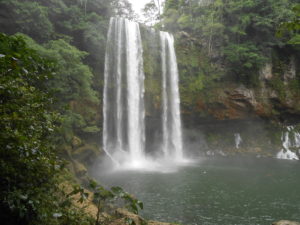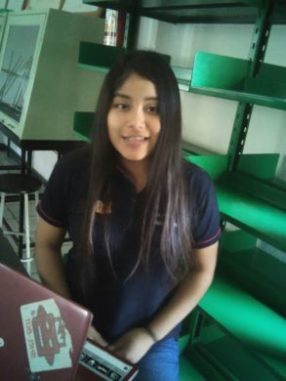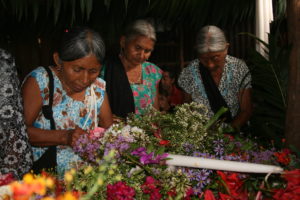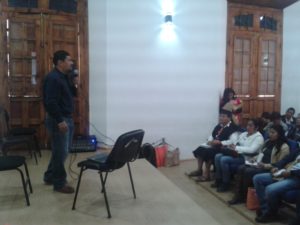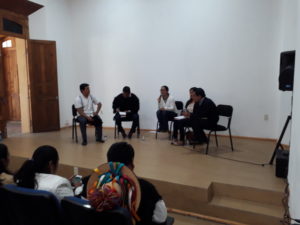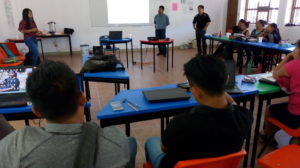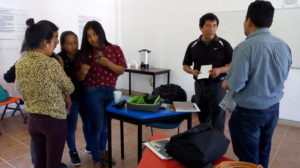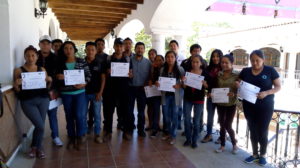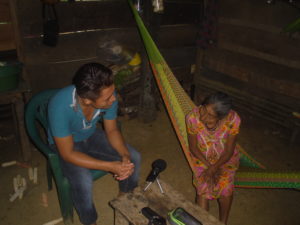COUNTING IN CHOL:
The language Chol uses a vigesimal (base-20) counting system. Here are the numerals for 1–20:
Jun 1 Junlujun 11
Cha’ 2 Lajchän 12
Ux 3 Uxlujun 13
Chän 4 Chänlujun 14
Jo’ 5 Jo’lujun 15
Wäk 6 Wäklujun 16
Wuk 7 Wuklujun 17
Waxäk 8 Waxäklujun 18
Bolon 9 Bolonlujum 19
Lujun 10 Junk’al 20
In our language Chol, when we count things the form of the number must change depending on the form of the objects being counted, for example depending on whether they are round, long, standing; whether the thing being counted is an person or an animal, as in the following examples:
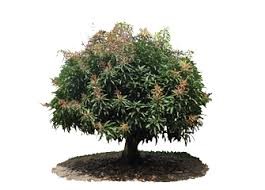 a tree (standing) = juñtyejk tye’
a tree (standing) = juñtyejk tye’
 a woman (standing) = juñtyikil lakña’
a woman (standing) = juñtyikil lakña’
 a dog (crouched) = juñkojty ts’i’
a dog (crouched) = juñkojty ts’i’
 a pineaplle (round) = juñpijty pajch’
a pineaplle (round) = juñpijty pajch’
 a tortilla = juñk’ej waj
a tortilla = juñk’ej waj
 a plate (round) = juñwejch ch’ejew
a plate (round) = juñwejch ch’ejew
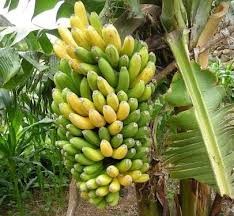 a bunch of bananas (hanging) = juñpajl ja’as
a bunch of bananas (hanging) = juñpajl ja’as

